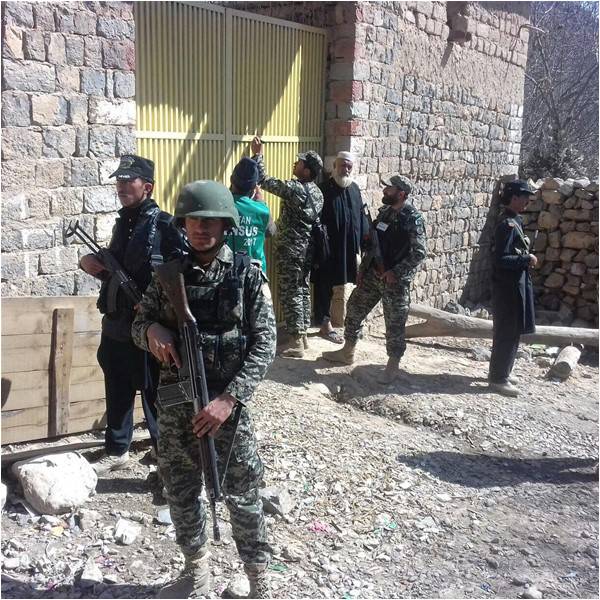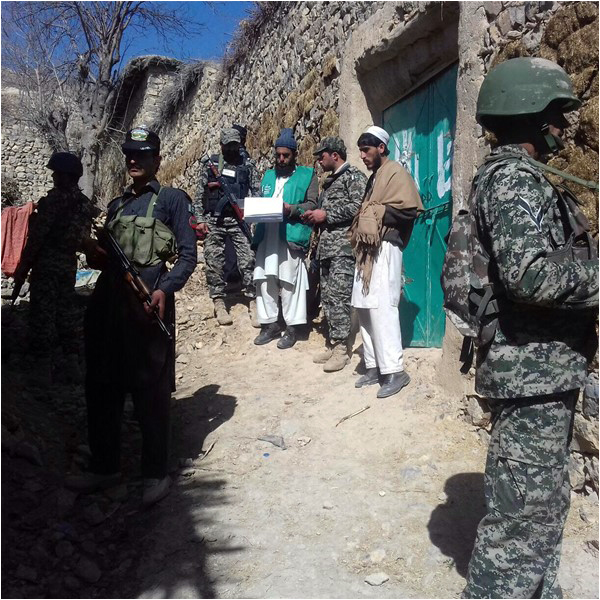
The irony of ironies is that mere days after the Federally Administered Tribal Areas (Fata) were merged with Khyber-Pakhtunkhwa, a large chunk of its population is likely to be left out of the census.
This is happening because the census takers are not marking down people who have been internally displaced. Over the last few years, as military operations were launched in Fata to mop up terrorists, its people had to leave home to escape the fighting. They fanned out over the country with many of them heading to Karachi in particular. Over time, many families did return home—but their numbers are disputed. The Fata Development Management Authority, for example, says 274,044 of 336,042 internally displaced people from Fata have gone home but 61,998 have yet to be sent back. Other government agencies and authorities have said 89% of people have gone home and yet others have put the number at 100%. The government has said, however, that all of them have returned home by April 30 but by that time the census will have wrapped up. These discrepancies are being taken seriously by many people. On March 14, a petition was even filed in the Islamabad High Court saying that these internally displaced people will be left out.
For what it is worth, a senior official from the Pakistan Bureau of Statistics said that they did not think of the displaced people before planning the census but during a meeting on Monday they had decided they would be registered where they live. This is a band-aid solution but would still perhaps be better than leaving them out completely. Noreen Naseer, a lecturer from Kurram Agency who also speaks for tribal women, argues that one fix could be to have a column on the form that acknowledges that a displaced person will go back home.
So for now, though, IDPs are not necessarily being counted. This was noticed by Dr Mehtab Karim, a PhD in Sociology and Demographics, who has worked at the Pew Research Centre and has been advising the government on the census since the 1980s. He explained that this time around a short form is being used instead of the more detailed long form, which would have information on displaced people, disabled people, where people were a year earlier etc. According to what he has heard in meetings in Islamabad, this information is scheduled for the second round but he is sceptical that will happen this year.

Another worry revolves around the CNICs that were blocked in October 2016 over security concerns. People in Fata noted that the army personnel were writing the names of the elders of the house by registering their identity cards number and verifying their data with NADRA. But they point out that the cards of almost 20,000 tribals have been blocked. This is one reason why the Mehsuds and other tribes have boycotted the census. They are also asking how this will work for women who do not have CNICs to begin with. People are also asking what will be made of the tribal people who work as labour, drivers and fruit vendors in Punjab and Sindh.
The president of the Fata Students female wing, Advocate Samreena Wazir, recommends that the census committee could crosscheck the data that is available with USAID, the Election Commission, the Fata Development Management Authority or polio workers. She feels this would lead them to a much more accurate figure. “We will hold protests in front of the National Press Club in Islamabad so the grievances of the tribals are heard,” she declared.
A recent report from the Fata Reforms Committee put its population at 4.8 million but the general perception is that the number is much higher and the census will confirm this. In 1998, Fata’s population was counted as 3.18 million but if you ask the people there, they will say the real number is closer to 8 million. “The census should be held impartially and everybody should be treated equally, the tribal should not be neglected,” said the ameer of the Jamaat-e-Islami in Khyber-Pakhtunkhwa Mushtaq Ahmad. He held protests when the tribal people’s CNICs were blocked.

What is clear to everyone, however, is that a proper picture will help Fata plan for the next 10 years. A security analyst on Fata, Dr. Ashraf Ali, gave the example of the need for doctors, teachers, nurses and experts in every field. “Fata lack medical universities and basic hospital equipment,” he said. After the census, they will be able to figure out where to put money and where the population’s health care should be planned.
Fata desperately needs census data to also figure out how to rehabilitate areas marked by the fight against militancy. In many areas almost half of the infrastructure has been destroyed. It is almost as if planning for the future will include undoing the damage of the past.
The writer is a reporter based in Peshawar
This is happening because the census takers are not marking down people who have been internally displaced. Over the last few years, as military operations were launched in Fata to mop up terrorists, its people had to leave home to escape the fighting. They fanned out over the country with many of them heading to Karachi in particular. Over time, many families did return home—but their numbers are disputed. The Fata Development Management Authority, for example, says 274,044 of 336,042 internally displaced people from Fata have gone home but 61,998 have yet to be sent back. Other government agencies and authorities have said 89% of people have gone home and yet others have put the number at 100%. The government has said, however, that all of them have returned home by April 30 but by that time the census will have wrapped up. These discrepancies are being taken seriously by many people. On March 14, a petition was even filed in the Islamabad High Court saying that these internally displaced people will be left out.
People in Fata noted that personnel were writing the names of the elders of the house by registering their CNICs and verifying their data with NADRA. But they point out that the cards of almost 20,000 tribals have been blocked
For what it is worth, a senior official from the Pakistan Bureau of Statistics said that they did not think of the displaced people before planning the census but during a meeting on Monday they had decided they would be registered where they live. This is a band-aid solution but would still perhaps be better than leaving them out completely. Noreen Naseer, a lecturer from Kurram Agency who also speaks for tribal women, argues that one fix could be to have a column on the form that acknowledges that a displaced person will go back home.
So for now, though, IDPs are not necessarily being counted. This was noticed by Dr Mehtab Karim, a PhD in Sociology and Demographics, who has worked at the Pew Research Centre and has been advising the government on the census since the 1980s. He explained that this time around a short form is being used instead of the more detailed long form, which would have information on displaced people, disabled people, where people were a year earlier etc. According to what he has heard in meetings in Islamabad, this information is scheduled for the second round but he is sceptical that will happen this year.

Another worry revolves around the CNICs that were blocked in October 2016 over security concerns. People in Fata noted that the army personnel were writing the names of the elders of the house by registering their identity cards number and verifying their data with NADRA. But they point out that the cards of almost 20,000 tribals have been blocked. This is one reason why the Mehsuds and other tribes have boycotted the census. They are also asking how this will work for women who do not have CNICs to begin with. People are also asking what will be made of the tribal people who work as labour, drivers and fruit vendors in Punjab and Sindh.
The president of the Fata Students female wing, Advocate Samreena Wazir, recommends that the census committee could crosscheck the data that is available with USAID, the Election Commission, the Fata Development Management Authority or polio workers. She feels this would lead them to a much more accurate figure. “We will hold protests in front of the National Press Club in Islamabad so the grievances of the tribals are heard,” she declared.
A recent report from the Fata Reforms Committee put its population at 4.8 million but the general perception is that the number is much higher and the census will confirm this. In 1998, Fata’s population was counted as 3.18 million but if you ask the people there, they will say the real number is closer to 8 million. “The census should be held impartially and everybody should be treated equally, the tribal should not be neglected,” said the ameer of the Jamaat-e-Islami in Khyber-Pakhtunkhwa Mushtaq Ahmad. He held protests when the tribal people’s CNICs were blocked.

What is clear to everyone, however, is that a proper picture will help Fata plan for the next 10 years. A security analyst on Fata, Dr. Ashraf Ali, gave the example of the need for doctors, teachers, nurses and experts in every field. “Fata lack medical universities and basic hospital equipment,” he said. After the census, they will be able to figure out where to put money and where the population’s health care should be planned.
Fata desperately needs census data to also figure out how to rehabilitate areas marked by the fight against militancy. In many areas almost half of the infrastructure has been destroyed. It is almost as if planning for the future will include undoing the damage of the past.
The writer is a reporter based in Peshawar

